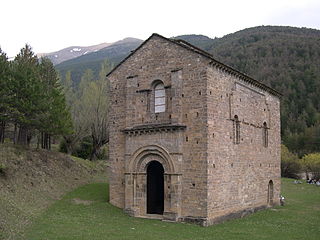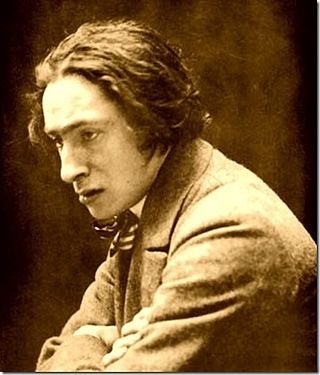
Casa Vicens is a modernist building situated in the Gràcia neighbourhood of Barcelona. It is the work of architect Antoni Gaudí and is considered to be his first major project. It was built between 1883 and 1885, although Gaudí drew up the initial plans between 1878 and 1880. The work belongs to the orientalist style, similar to Neo-Mudéjar architecture, although interpreted in Gaudí’s own personal way, with a uniqueness that only he knew how to add to his projects. In this work, and for the first time, Gaudí outlined some of his constructive resources that would become regular features throughout the emergence of Modernism. The work was widely discussed when it was built and caused a great sensation among the general public at the time. When the building was constructed, Gràcia was still an independent urban nucleus of Barcelona; it had its own council and was classified as a town, though nowadays it is a district of the city.

Emilio Botín-Sanz de Sautuola García de los Ríos,iure uxorisMarquess of O'Shea was a Spanish banker. He was the executive chairman of Spain's Grupo Santander. In 1993 his bank absorbed Banco Español de Crédito (Banesto), and in 1999 it merged with Banco Central Hispano creating Banco Santander Central Hispano (BSCH), which became Spain's largest bank, of which he was co-president with Central Hispano's José María Amusategui, until Amusategui retired in 2002. In 2004, BSCH acquired the British bank Abbey National, making BSCH the second largest bank in Europe by market capitalisation. He was known for his obsession with growth and performance as well as regularly visiting branches.

César Manrique Cabrera was a Spanish artist, sculptor and nature activist from Lanzarote, known particularly for the architectural projects in which he was involved as artistic director in his island.

Daniel Urban Kiley was an American landscape architect, who worked in the style of modern architecture. Kiley designed over one-thousand landscape projects including Gateway Arch National Park in St. Louis.

Banco Santander, S.A., doing business as Santander Group, is a Spanish multinational financial services company based in Madrid and Santander in Spain. Additionally, Santander maintains a presence in all global financial centres as the 19th-largest banking institution in the world. Although known for its European banking operations, it has extended operations across North and South America, and more recently in continental Asia. It is considered a systemically important bank by the Financial Stability Board.

The English landscape garden, also called English landscape park or simply the English garden, is a style of "landscape" garden which emerged in England in the early 18th century, and spread across Europe, replacing the more formal, symmetrical French formal garden which had emerged in the 17th century as the principal gardening style of Europe. The English garden presented an idealized view of nature. Created and pioneered by William Kent and others, the “informal” garden style originated as a revolt against the architectural garden and drew inspiration from paintings of landscapes by Salvator Rosa, Claude Lorrain, and Nicolas Poussin.

José Sotero de Madrazo y Agudo was a Spanish painter and engraver; one of the primary exponents of the Neoclassical style in Spain. He was the patriarch of a family of artists that included his sons Federico and Luis; and his grandsons, Raimundo and Ricardo.

Eduardo Rosales Gallinas was a Spanish painter. He was an adherent of the Italian-based art movement known as "Purismo" and specialized in historical scenes.

The Miller House and Garden, also known as Miller House, is a mid-century modern home designed by Eero Saarinen and located in Columbus, Indiana, United States. The residence, commissioned by American industrialist, philanthropist, and architecture patron J. Irwin Miller and his wife Xenia Simons Miller in 1953, is now owned by Newfields. Miller supported modern architecture in the construction of a number of buildings throughout Columbus, Indiana. Design and construction on the Miller House took four years and was completed in 1957. The house stands at 2860 Washington St, Columbus Indiana, and was declared a National Historic Landmark in 2000. The Miller family owned the home until 2008, when Xenia Miller, the last resident of the home, died.
Tim White-Sobieski is a video and installation artist based in New York and Berlin. He was educated as an architect and dedicated himself to visual art and filmmaking, exploring the fields of painting, sculpture, photography, video, video installations and light installations throughout his career. He began showing in New York in the early 1990s with his "Blue Paintings." Emphasis on the role of the subconscious in his paintings had affinities with visual abstractionism and literary existentialism.

A traditional Spanish garden is a style of garden or designed landscape developed in historic Spain. Especially in the USA, the term tends to be used of a garden design style with a formal arrangement that evokes, usually not very precisely, the sort of plan and planting developed in southern Spain, incorporating principles and elements from precedents in ancient Persian gardens, Roman gardens and Islamic gardens, and the great Moorish gardens of the Al-Andalus era on the Iberian Peninsula.

Santander Cathedral is located in the Spanish city of Santander. Its structure is mainly Gothic, although it has been extended and renovated in later times.

Paloma O'Shea Artiñano, 1st Marchioness of O'Shea is a pianist, patron of the arts, founder and current president of the Reina Sofía School of Music, and founder and president of the Albéniz Foundation, which organizes the Paloma O'Shea Santander International Piano Competition in Santander, Spain.

A Bien de Interés Cultural is a category of the heritage register in Spain. The term is also used in Venezuela and other Spanish-speaking countries.

Carlos Albert Andrés is a Spanish sculptor. He was one of the Group 99, whose manifesto intends to exalt the traditional values art. Albert works mainly with wrought iron and weathering steel. He considers Sculpture to share many of the features of drawing, and emphasizes in his work, skill and handling of these materials, especially iron, making drawings of his pieces "three-dimensional" creating empty spaces in the masses from tracks that seem to come alive. In his artistic creations is more important what he evokes and suggests to the viewer that what is represented. His career is part of abstract art.

Victorio Macho was a renowned 20th century Spanish sculptor. He is considered to be one of the greats of modern Spanish sculpture. His style was influenced by art deco. His home and workshop in Toledo was converted into a museum dedicated to his work, the Victorio Macho Museum, after his death. He has been featured on a postage stamp of Spain.

Gardening in Spain reflects the different styles of Spanish art, including influences from Roman, Islamic, Italian, French, and English gardens. Modern Spanish gardening emphasize gardens and their surroundings, focusing heavily on both urban horticulture and landscape architecture.

The Botanical Garden of Lourizán is an arboretum of some 54 hectares in the municipality of Pontevedra in Spain. It has more than 850 catalogued species and one of the largest collections in Spain. It is the most important botanical garden in Galicia.
Carlos Bunga is a Portuguese artist known for his installations out of mass-produced materials, like cardboard, duct tape and home paint, questioning architecture as a language of power and other inertias related to it, like order and solidity.

The Luis Vallejo Bonsai Museum is a public access museum located in Alcobendas, Madrid, Spain, dedicated to the display and study of the art of bonsai. The museum was opened in 1995 and is one of the most important in Europe in its class. The museum presents the personal collection of Luis Vallejo as well as specimens donated by others. The collection is widely considered one of the best outside Japan, with multiple trees having received important awards in Spanish and international competitions.
















